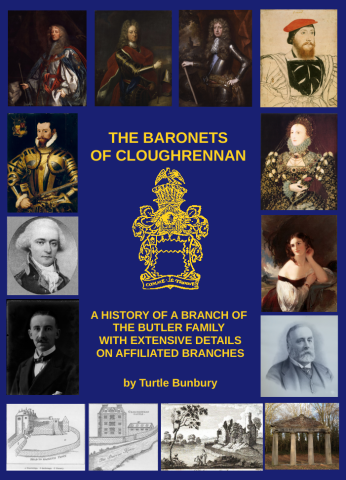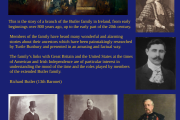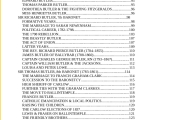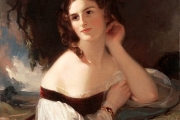The Baronets of Cloughgrennan
The story of an Irish family from early beginnings in the 12th century up to the early part of the 20th century. Links to England at the time of the reformation and Plantation and to the United States at the time of American Independence are of particular interest. The people and events have been diligently researched by renowned historian and writer Turtle Bunbury.
The family has relations around the world and you might be related!
The Baronets of Cloughgrennan, A History of a Branch of the Butler Family with Extensive Details on Affiliated Branches.
Foreword
This is the story of a branch of the Butler family in Ireland, from early beginnings over 800 years ago, up to the early part of the 20th century.
Members of the family have heard many wonderful and alarming stories about their ancestors which have been painstakingly researched by Turtle Bunbury and presented in an amusing and factual way.
The family’s links with Great Britain and the United States at the times of American and Irish Independence are of particular interest in understanding the mood of the time and the roles played by members of the extended Butler family.
Richard Butler (13th Baronet)
INTRODUCTION
The Butler family trace their ancestry to Theobald fitzWalter, an Anglo-Norman knight born in about 1150AD who arrived in Ireland in 1185 in the retinue of Prince John, Lord of Ireland, the youngest surviving son of Henry II and Eleanor of Aquitaine. John granted Theobald the hereditary office of "boteillier" or Chief Butler of Ireland, from which his descendants took their surname.
The family prospered in Ireland during the Middle Ages, acquiring immense lands and wealth as well as the earldom of Ormond. In the Elizabethan Age, Black Tom Butler, the 10th Earl, was one of the most influential men in Britain or Ireland. His younger brother Sir Edmund Butler of Cloughgrenan was father of the first baronet of Cloughgrenan, a title granted by Charles I in 1628. The family later moved to Garryhundon, County Carlow, where the architect William Halfpenny built a splendid new mansion in 1734.
Sir Edmund’s descendants became one of the leading families in County Carlow, serving as High Sheriffs and Members of Parliament, defending the Establishment from Whiteboys and United Irishmen, securing their homes at Garryhundon and Ballintemple.
According to the Rev. Comerford, Ballintemple translates as “the townland of the church” or a place of sanctuary, in reference to a church which once stood in what became the Church Field, near Ballintemple House, and adjoining the river Slaney. Portions of the church walls were still standing until the time of the 8th Baronet who levelled them and used the materials for the construction of new farm buildings.
Although there was much inter-marriage between the principal Irish families during the sixteenth and seventeenth centuries, the Butlers have often been unpredictable when it comes to their wives. The second baronet married a wealthy London heiress, the eighth and ninth both married daughters of industrial magnates from northern England, and the eleventh married his distant American-born cousin.
However, their wives have often had strong Irish connections too. The wife of the 6th baronet was one of the leading clergymen in Dublin, the wife of the 7th was from the prosperous Newenham family of County Cork, the 10th was of the aristocratic Bellinghams of County Louth while the Davidson-Houston family of the 12th baronet’s wife had strong ties with Counties Cork, Tipperary, Tyrone, Wicklow and Dublin.
The most remarkable Lady Butler was arguably Lady Alice, the wife of the 11th baronet, whose descent from Senator Pierce Butler, and abolitionist Fanny Kemble, brought the family line in a full circle.
What is particularly outstanding is that, aside from the succession of the 5th baronet to his uncle in 1732, the baronetcy has passed directly from father to son twelve out of thirteen times since the creation of the first baronet in 1628.
The following pages aim to give an insight onto the lives of the baronets, their wives and descendants up until the time of the Great War.




